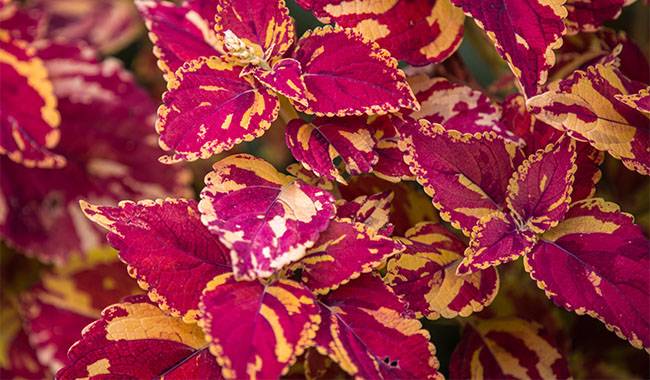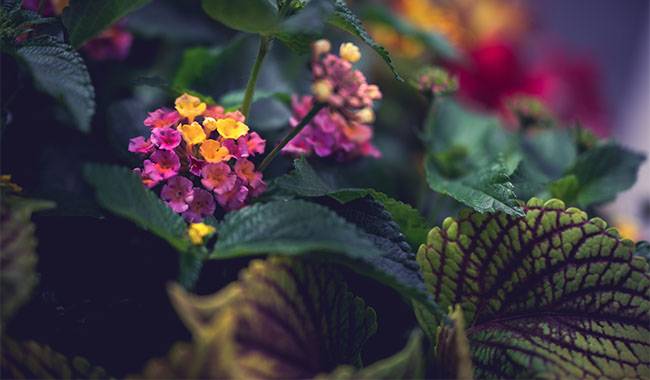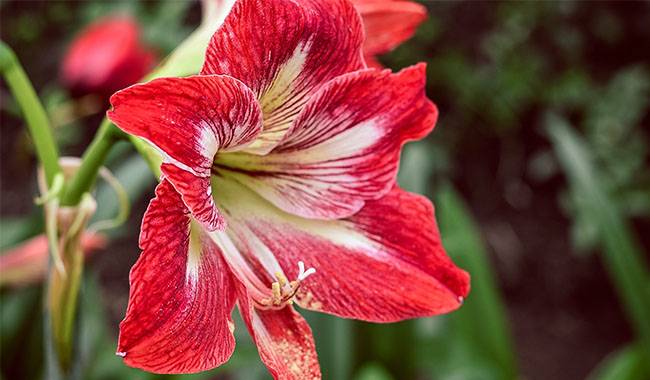
Indoor plants are believed to help purify the air of toxins, heavy metal impurities, and allergens. But for those who suffer from allergies, can themselves be a source of allergies. In addition to the legendary filter plants that release phytohormones and absorb harmful substances, there are many plants in this group that are harmful to allergy sufferers. Therefore, allergy sufferers should choose all plants used in home landscaping wisely. In this ThumbGarden article, you’ll find out which houseplants are suitable for allergy sufferers. You will learn Which Indoor Plants are Suitable for Allergic Patients in the ThumbGarden article.
WHAT ARE THE SYMPTOMS OF AN ALLERGY TO HOUSEPLANTS?

Choosing plants for florists who suffer from various types of allergies, especially contact or respiratory allergies, can be a big challenge. Even for the “safest” plants, no one can give a 100% recommendation or guarantee. All allergic reactions are individual.
When looking for “your” houseplant, you should always consider which allergens are dangerous in each situation. Odors, pollen, leaves, prickly needles, or tree sap – each possible danger must be analyzed and considered.
When purchasing theoretically safe houseplants, allergy sufferers should be aware of quarantine and make an effort to adapt not only to the plant but also to their own company. When isolating any potted pet from the main collection, carefully observe your reaction to its proximity. If any signs of an allergic reaction appear upon entering a room with a new plant, it is worthwhile to isolate it from contact immediately.
Symptoms of allergic reactions to houseplants include the following.
- dry cough, more often than not a tearing cough.
- Sneezing, uncontrolled and repetitive.
- stuffy nose or conversely, “runny nose”.
- Redness and itching of the skin, usually in the exposed and most vulnerable areas.
- Tearing, redness, swollen eyelids, itchy eyes, and conjunctivitis.
- Prolonged exposure or severe manifestations: breathing difficulties, asthmatic reactions, severe headaches, depression, drowsiness, apathy.
Even the right choice of plants for allergy sufferers can still cause problems if they are not cared for. Even with the most “friendly” species, dust accumulation, soil contamination (especially mold development on top of the substrate or in trays) can exacerbate all reactions. It is not the plant, but the dust and dirt that accumulates on its leaves that remains the main enemy of allergy-prone flower growers.
Plants need to be kept clean and “shiny” if they are to purify the air and do only good deeds. Thus, seemingly harmless or even recommended palms or small-leaved ficus trees (such as the universally loved Benjamin ficus) can be a source of allergies when they are not hygienic. The number of leaves also means a huge area for collecting allergens and dust.
Wiping leaves (which are wet on non-fleece crops) and showering are procedures that allergy sufferers should do more often than recommended. Exposure to fresh air and frequent ventilation is necessary not only for the plants but also to prevent the accumulation of allergens.
HOW TO CHOOSE THE PERFECT PLANT FOR ALLERGY SUFFERERS?

When choosing houseplants for interior decoration, a balance must be struck between safety and decorativeness. The latter need not be sacrificed, as beautiful flowering plants can also be conditioned to reduce allergenicity. Make sure you pay attention to the label and don’t hesitate to ask the salesperson for details.
It is a good idea to spend at least five minutes with the plant, touching its leaves and smelling it before you buy. As a rule of thumb, the first signs of allergy will show up immediately. If in doubt, move the plant away from its neighbors and make sure it doesn’t irritate you.
Flowering plants are the hardest to choose, but there are a few rules of thumb that will allow you to find lushly flowering accents without endangering the health of your allergy sufferers.
- Pay attention to pollen and stamens first: the smaller and less visible they are, the better (orchids and begonias, for example, don’t release pollen into the air, and spikes of fruit can be cut before they begin to ripen).
- Furry flowers are always safer – species with dense florets are obtained by sacrificing the number of stamens, so they are much safer than semi-flowered and flowerless variants.
- Tropical species require high humidity and are almost always safe for allergy sufferers – pollen counts are much lower and dust accumulates in the air in different ways.
And it’s worth remembering that even with “problematic” species, you can always install a trellis to completely isolate the room from pollen and essential oils, or keep the plants in a personal florist.
SAFE HOUSEPLANTS
Safe species for allergic flower growers include many of the most popular species that are even safe to keep in the bedroom.
chlorophytums;
ivy;
spathiphyllums;
orchids devoid of a strong aroma (Phalaenopsis orchids are primarily considered a hypoallergenic species).
laurel;
begonias (includes beautiful flowers and ornamental foliage)
balsams;
peperomia;
dracaena;
aloe;
tradescantia;
rhododendrons;
heathers and ericas;
croton;
boxwood;
Pineapples, bromeliads, and all their relatives (vriesia, guzmania, etc.).
carioca, butia, trachycarpus and other types of compact palms.
non-flowering cacti or forest-flowering cacti, except for species with easily broken spines (mainly cacti).
Indoor (forced) bulbs – crocuses and daffodils.
Annual or perennial garden houseplants – roses and hydrangeas.
IT IS BETTER TO KNOW YOUR “ENEMY” PERSONALLY
The best plant selection strategy for allergy sufferers is to avoid species that can cause harm. The most common cause of allergies is pollen, but some plants actively release alkaloids, enzymes, and essential oils into the air, which can cause allergic reactions if an individual is intolerant.
Plants classified as skin irritants or toxic also carry some risk (whereas for non-allergic plants, buds, burrs or sap may be only minor irritants that cause inflammation, for allergy sufferers, contact may be a more dangerous source of reaction).
When selecting plants that are “compatible” with various types of allergies, flowering plant groups with large stamens and anthers and ferns should be considered first. The spores of the latter can cause the same reactions as pollen. The type of allergy and susceptibility to the allergen are key factors.
If you have any allergic reactions to plants and pollen in your garden or in nature, you should avoid all fragrant plants that bloom like crazy. If you have never had a reaction to flowering, you may want to consider introducing the safest indoor flowering species into your collection.
Plants should be on the list of “no-no” plants for allergy sufferers.
- all toxic houseplants that are highly irritating to the skin (aglaonema, philodendrons, dieffenbachia, alocasia, euphorbia, akalifa, crassula, cyclamen, etc.);.
- medicinal herbs and plants (kalanchoe, lavender, oregano thyme, rosemary, etc.).
- Garden room species with basket-like inflorescences (gerbera, aster, chrysanthemum).
Plants with very strong aromas, especially at night (eucharis, krinum, allamanda, catharanthus, lilies, aristolochia, oleander, camellia, abutilon, citrus fruits, etc.), must also be avoided allergies. There are also plants that actively emit essential oils (pelargoniums, myrtle, cypress, and other indoor conifers).







